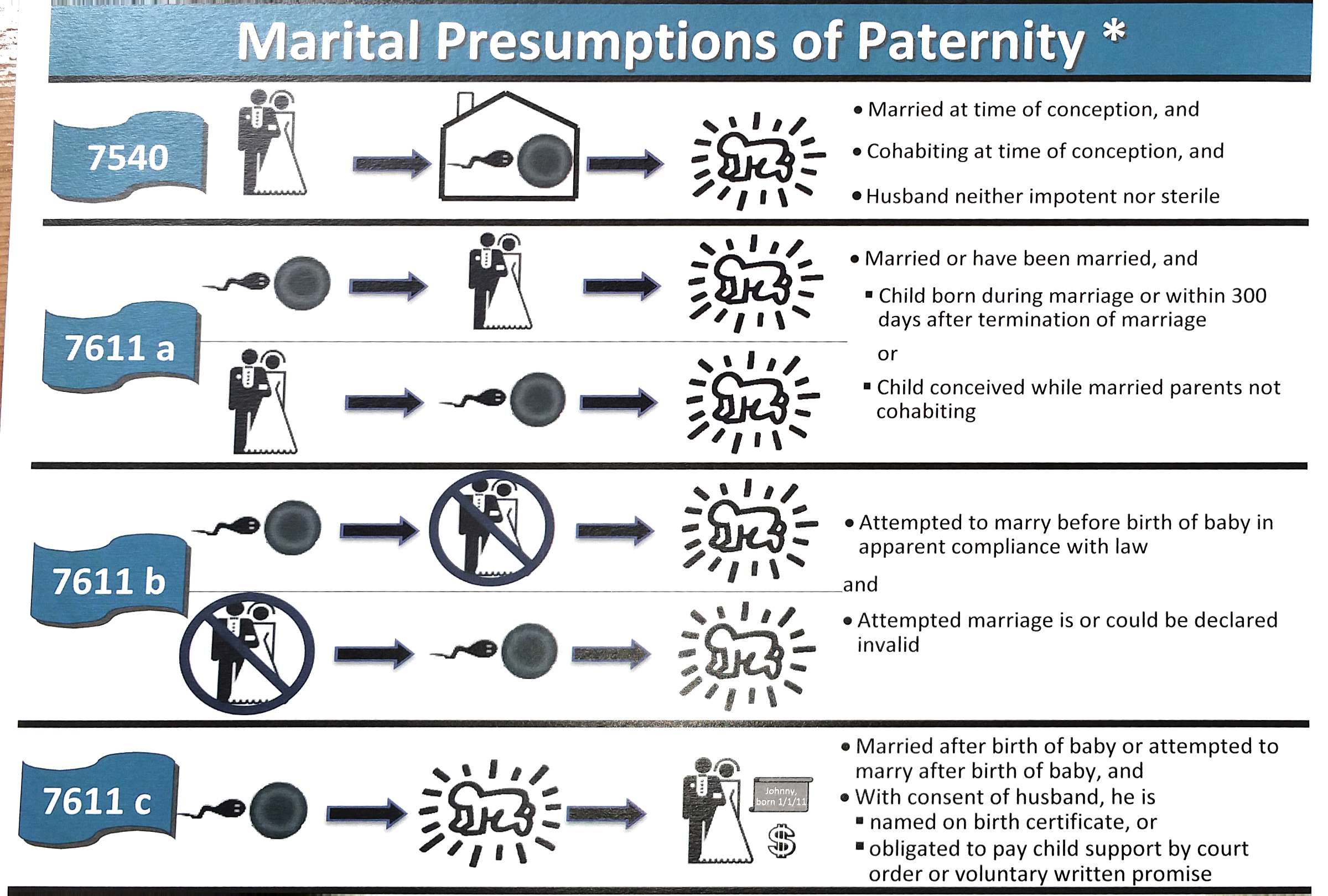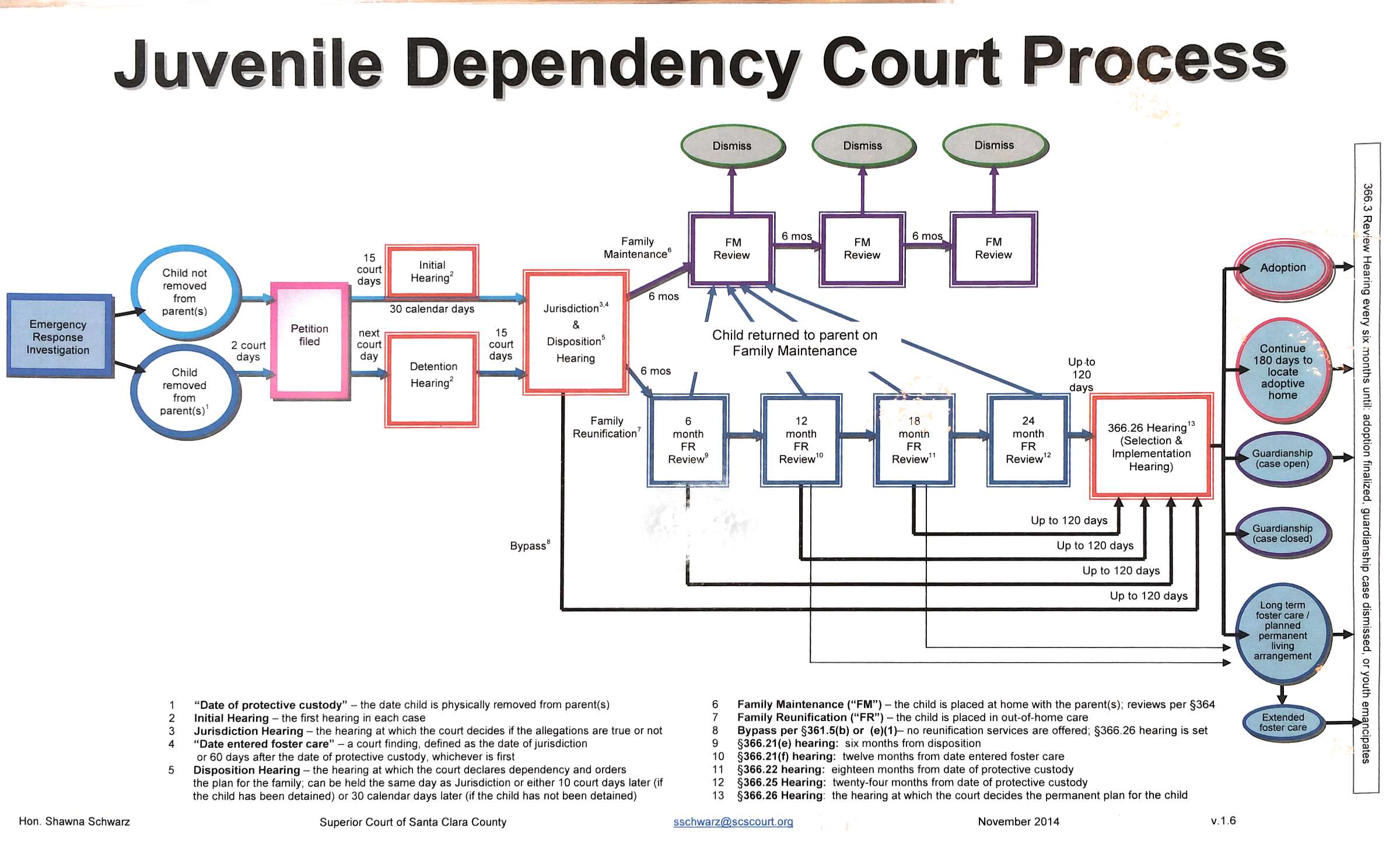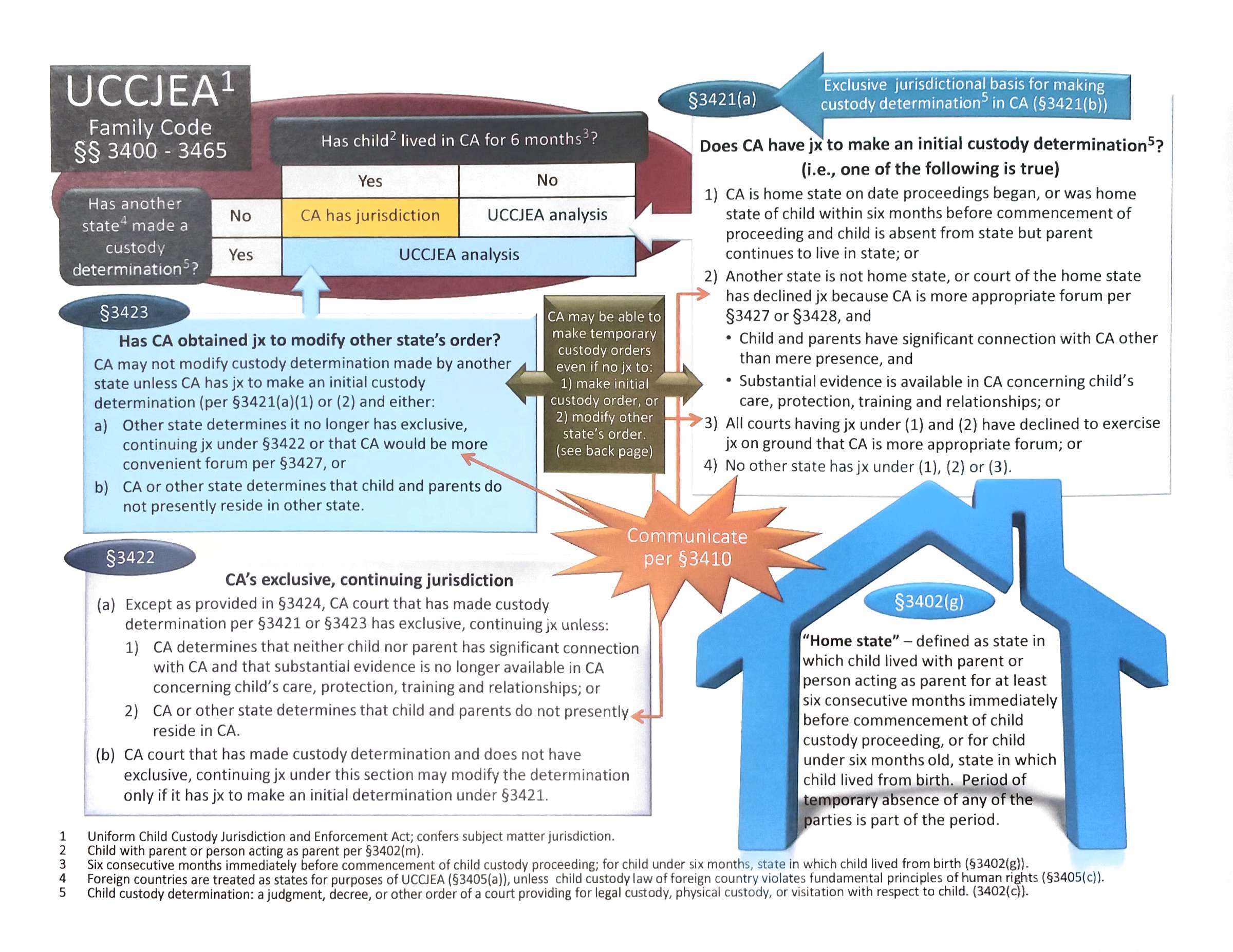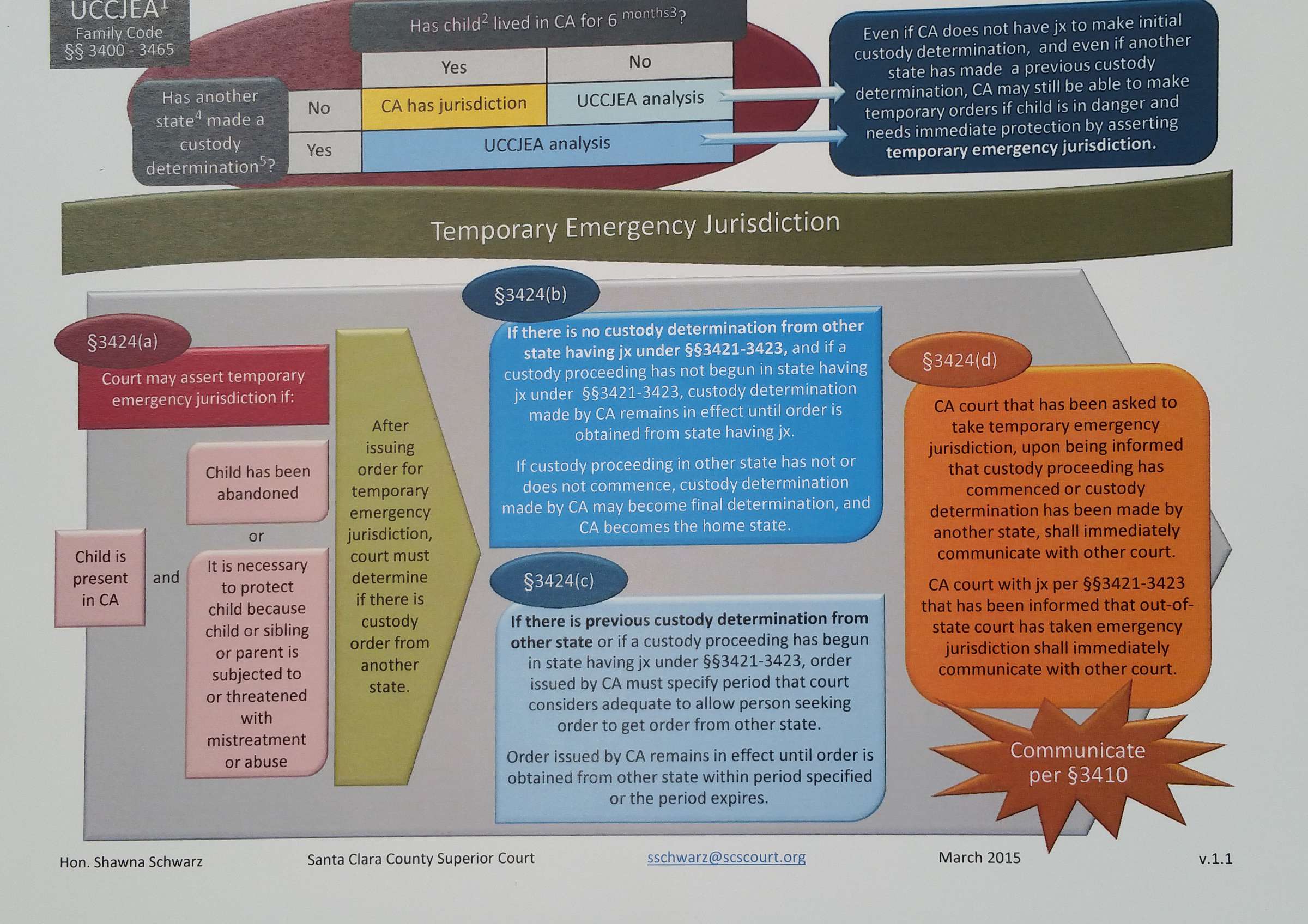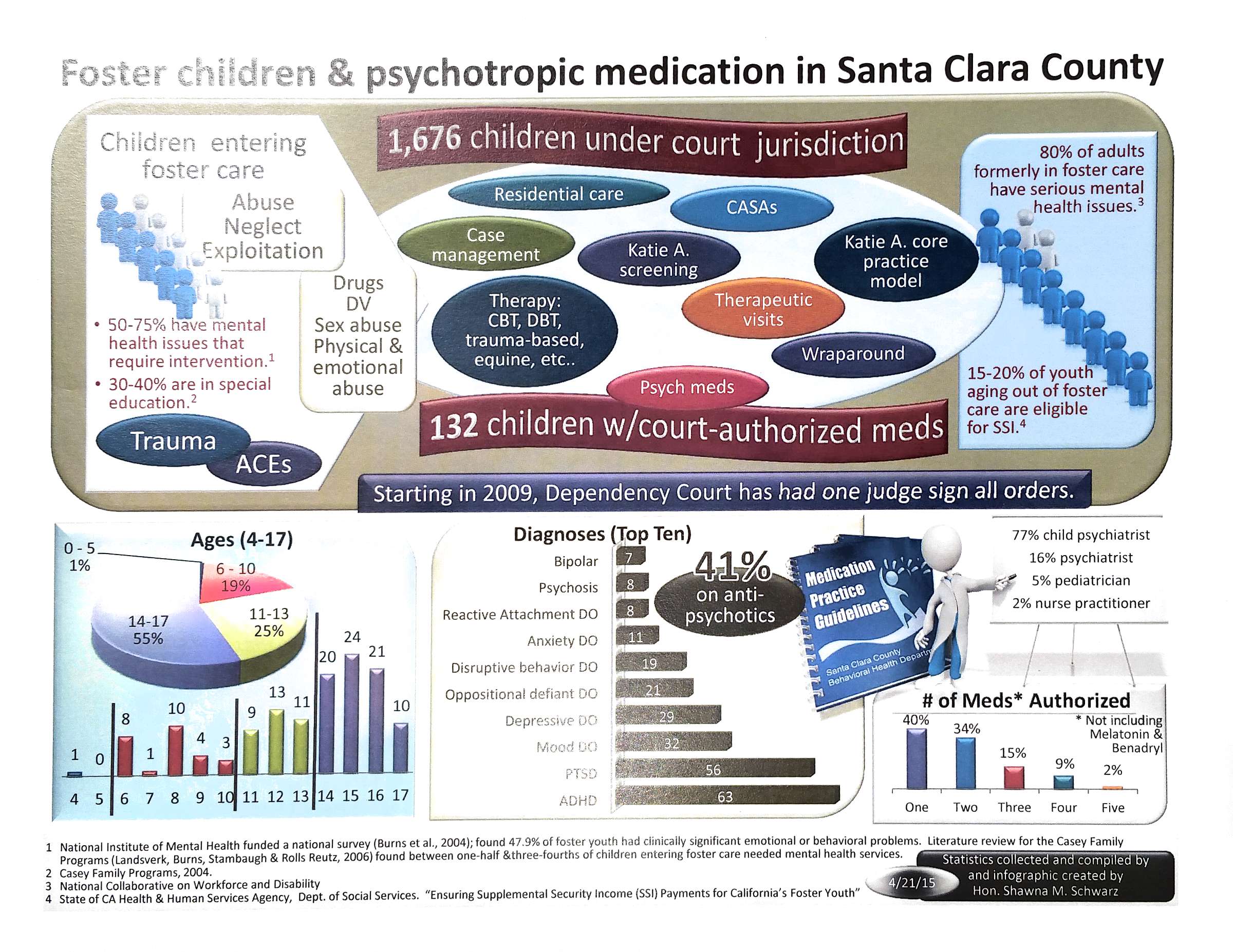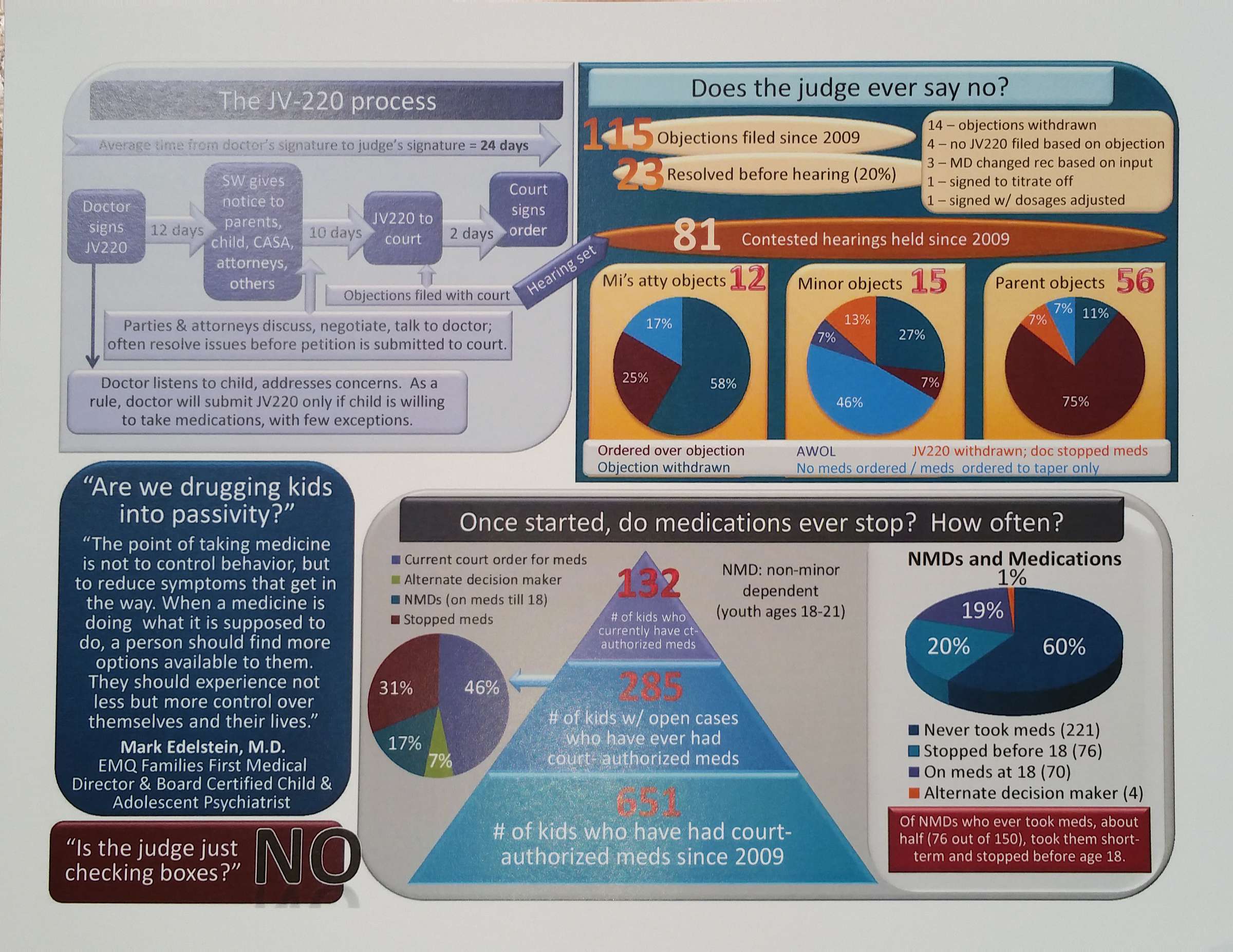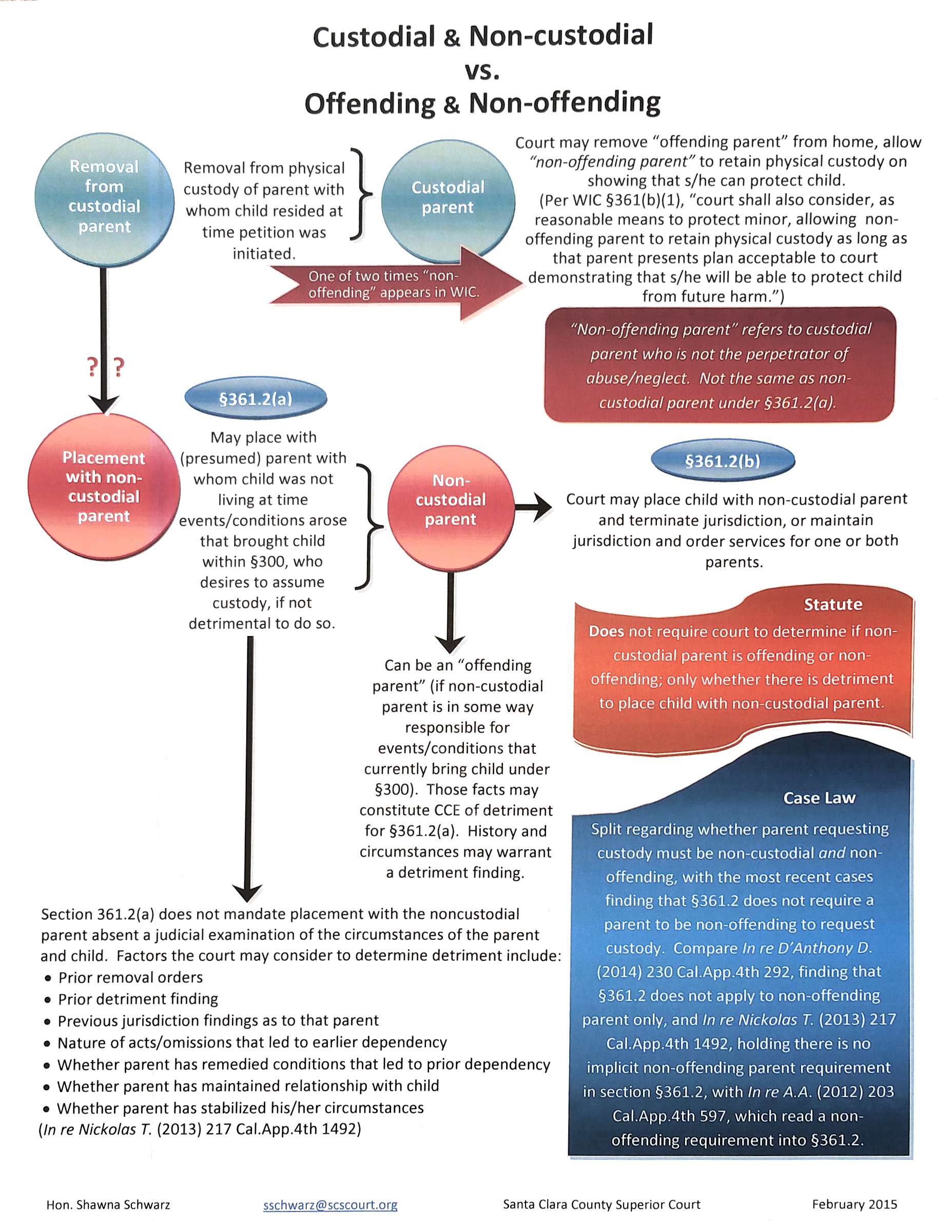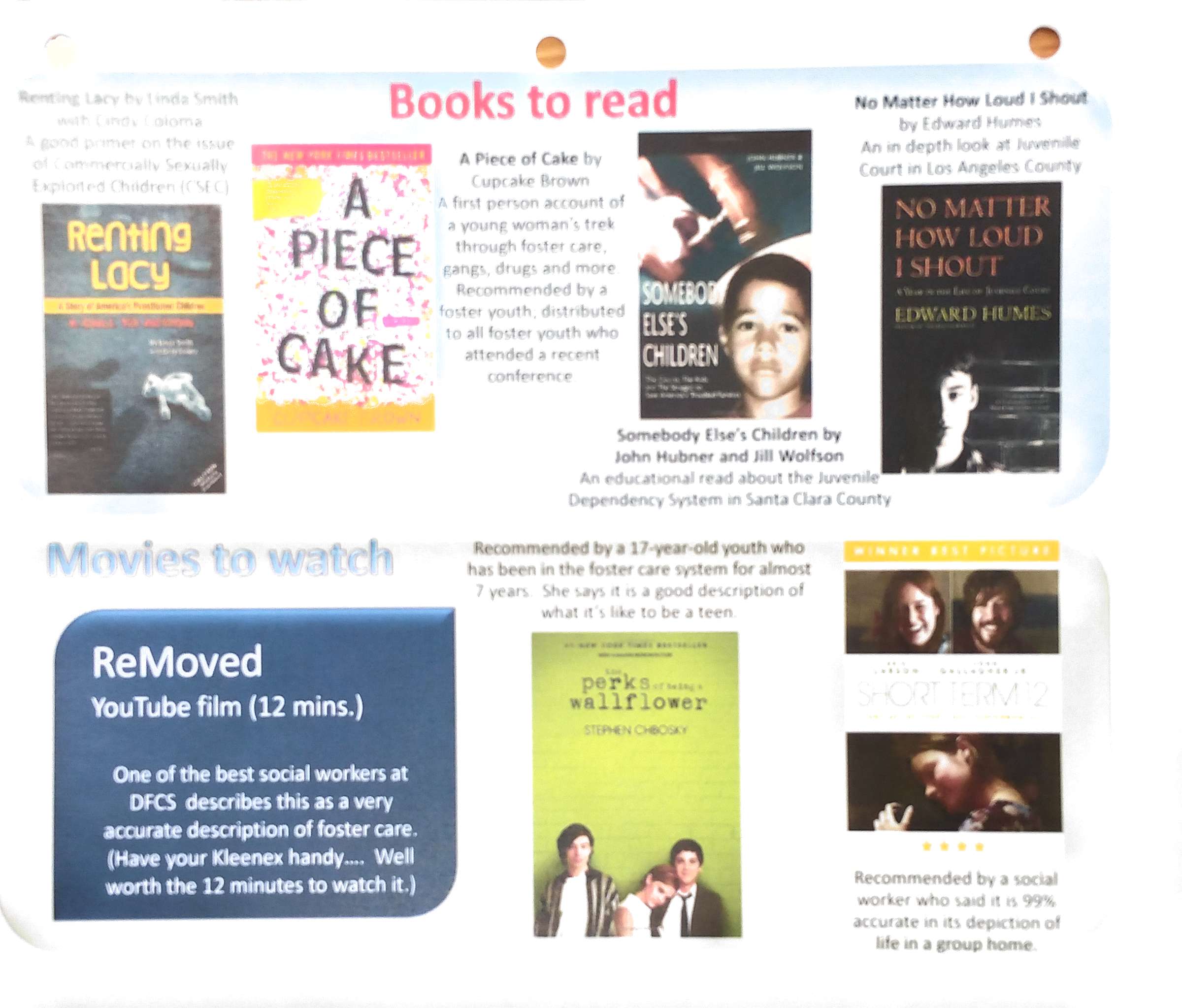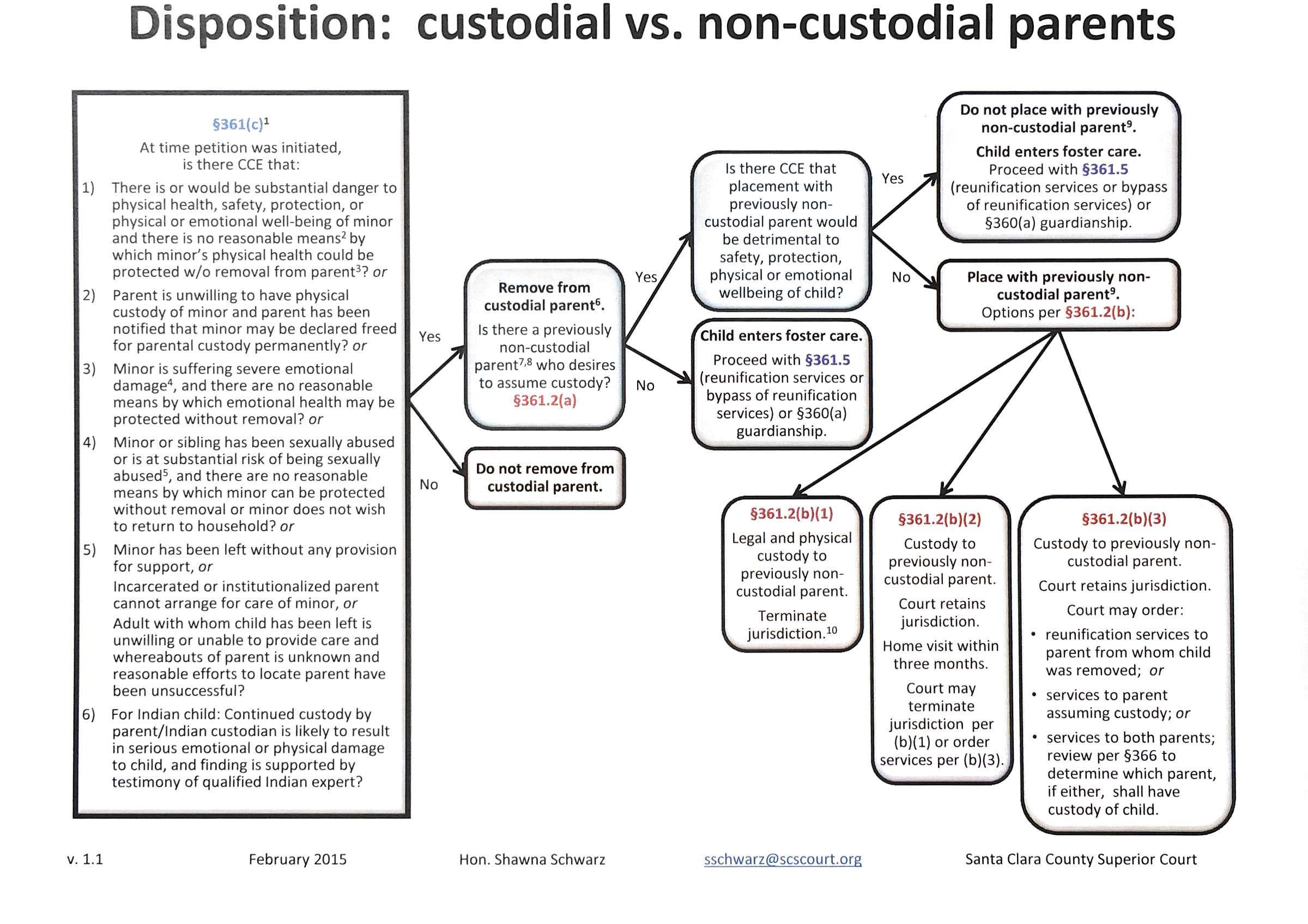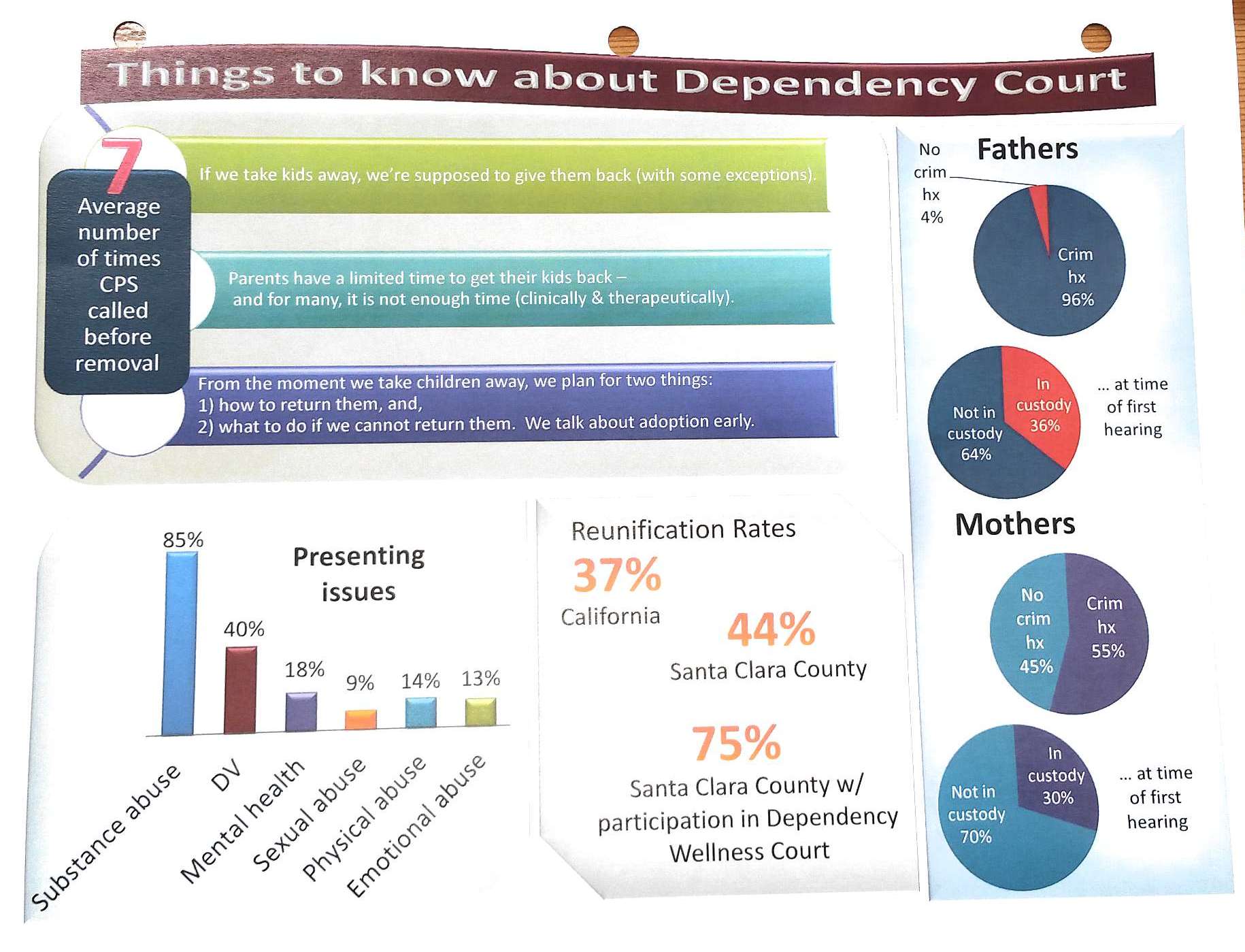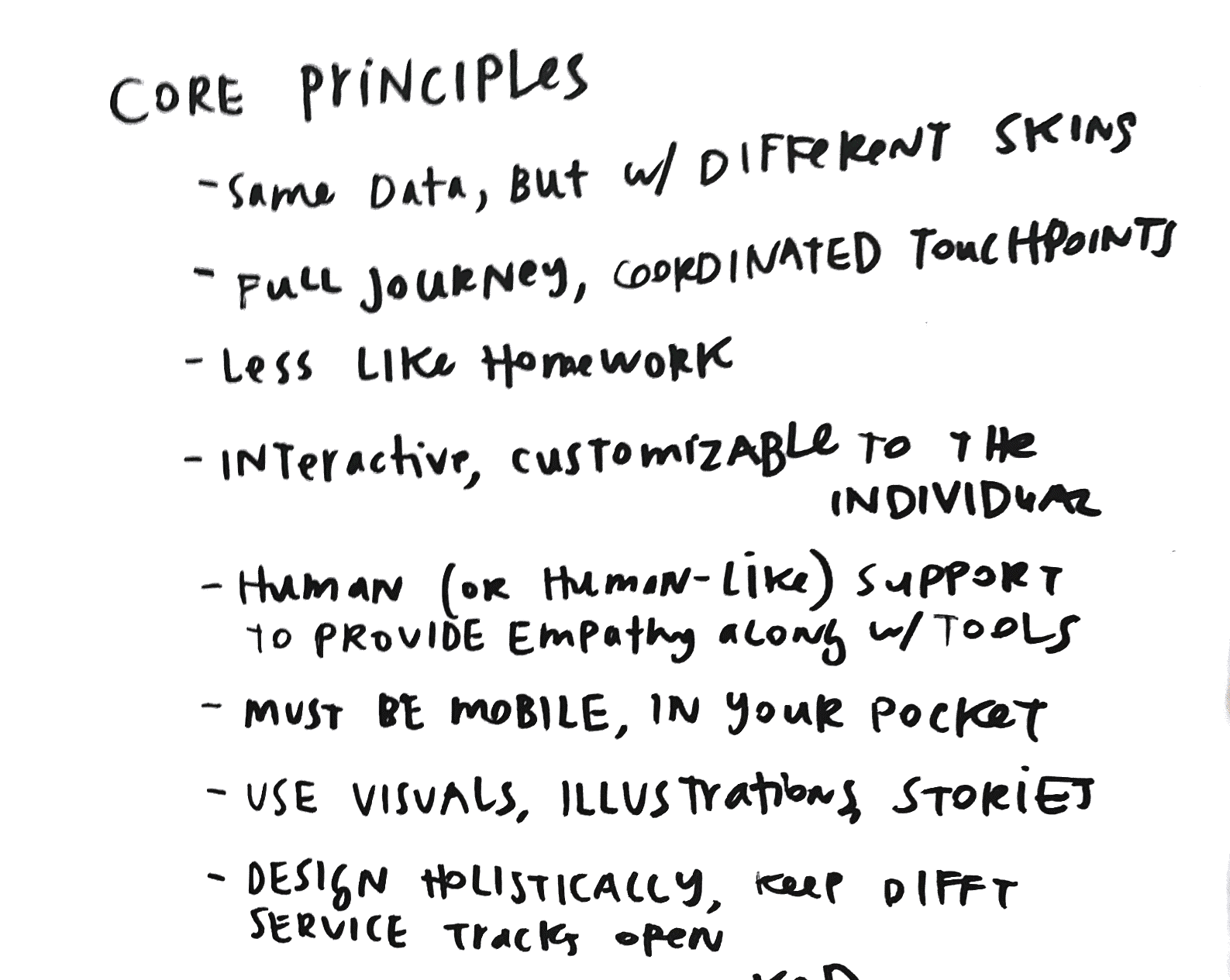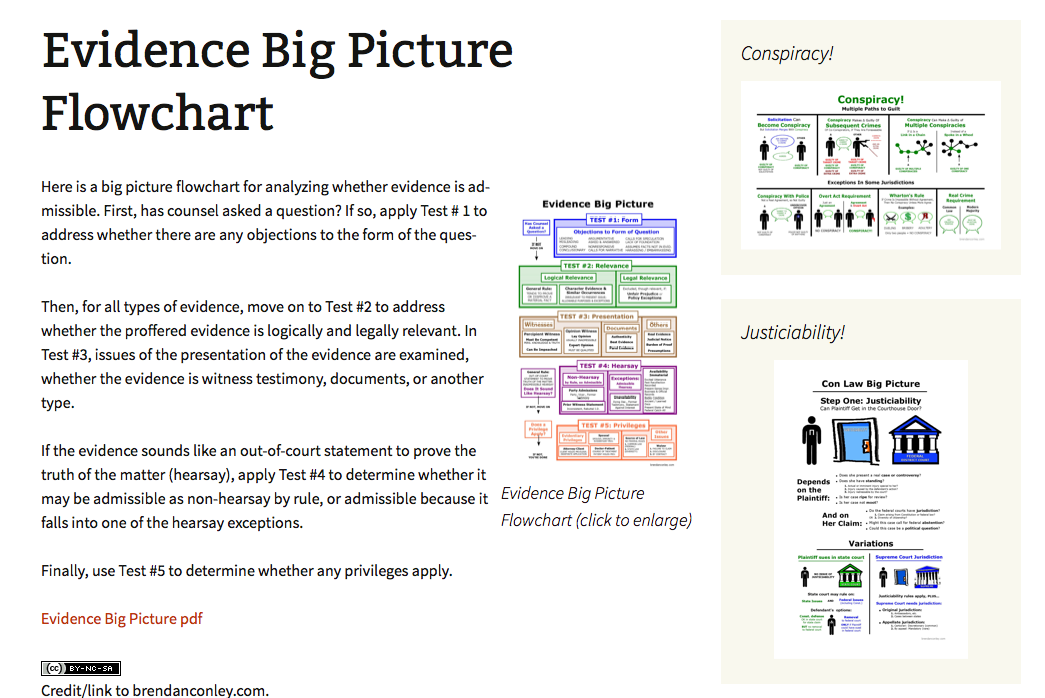Yesterday I had the privilege to visit the courtroom of the Honorable Shawna Schwarz in the Superior Court of Santa Clara County. I was there to discuss with a small group about a possible pilot of a Court Messaging Project in some family court hearings.
While I was in Judge Schwarz’s chambers, I noticed some flowcharts around — and upon further conversation, it turns out she makes all kinds of legal flowcharts, diagrams, and infographics. She uses a mix of tools — Microsoft Word, PowerPoint, etc. — and does them both for herself & other judges, as well as for lay people and attorneys who are trying to figure court procedure out for the first time.
One of them (this map of the Juvenile Dependency Court Process) is blown up big on the wall in some California courts — so that anyone in the court can figure out what to expect and where they are in this very complicated process.
All of this gets me to thinking:
- How can I get Judge Schwarz’s legal visuals out to the masses — and to other judges for them to use?
- How can we support people like Judge Schwarz to really easily create great visuals both of the process of court matters — and also of what is going on in the court room (like her info graphics do?)
On point number one, I’m thinking of how to create a Visual Law Best Practices. It could be
- a pattern library (like my Visual Law Library) — collecting together good examples of legal visuals and hopping people will find them
- an online course that sets some clear instructions & standards of how to do this — how to create legal process maps, flowcharts, and info graphics
- awards that recognize great efforts to make the court more usable
- workshops at different court & legal-aid conferences that teach people how to make these
On point number two, there are a few different ideas:
- Legal Visuals Authoring Tools: very intuitive software that helps non-designers create well-designed process maps, flowcharts, and info graphics (particularly in the world of law)
- Interactive Legal Visuals Authoring Tool: help the expert create these visuals to be interactive experiences — not just static visuals — so they are clickable, expandable, playable, and staged
- Pro Bono Design Network: have expert graphic, web, interaction & communication designers do one-off collaborations with court & legal aid leaders (like Judge Schwarz) to train them in specific tools, workshop specific communication challenges, and revise/improve their current legal visuals
Any thoughts on these ideas? Please let me know! I’m starting to work on this cluster of ideas at the end (the authoring tools & design network) — so especially if you have any ideas for me on these, send them along.
Here are some more of Judge Schwarz’s visuals:

